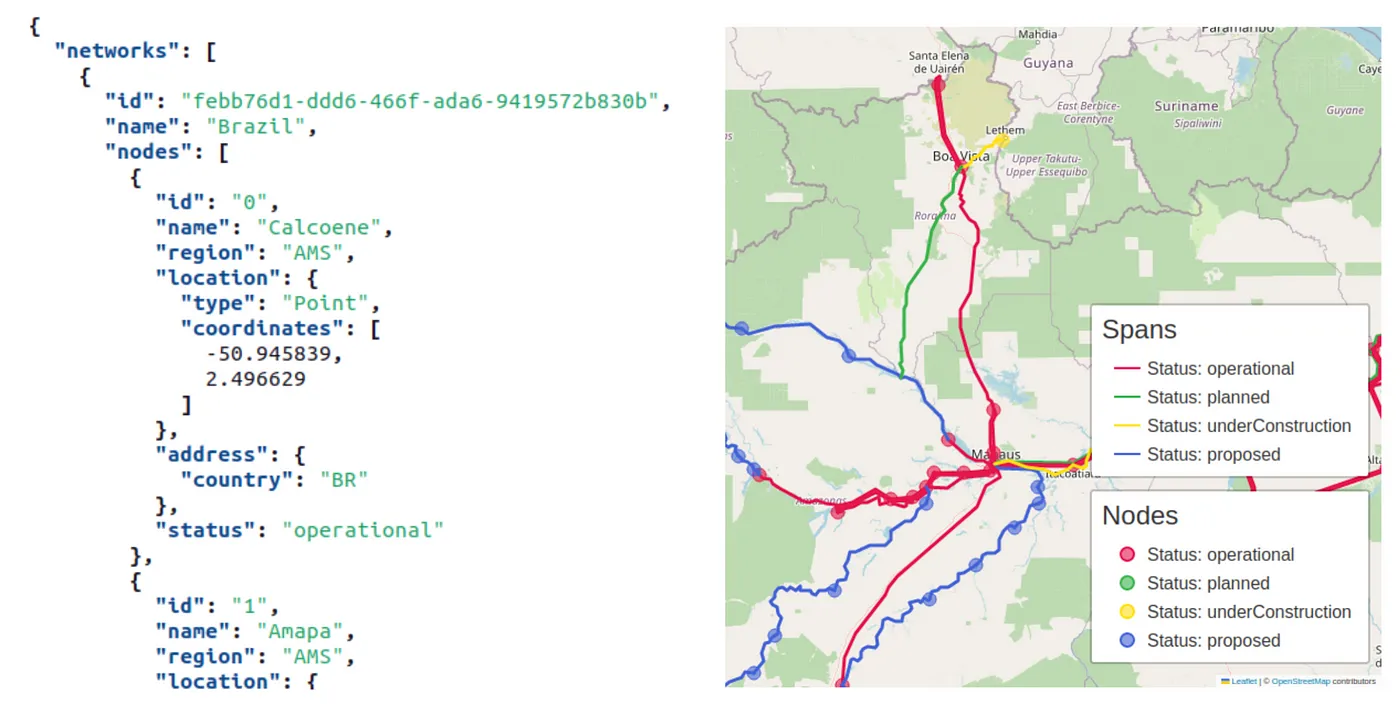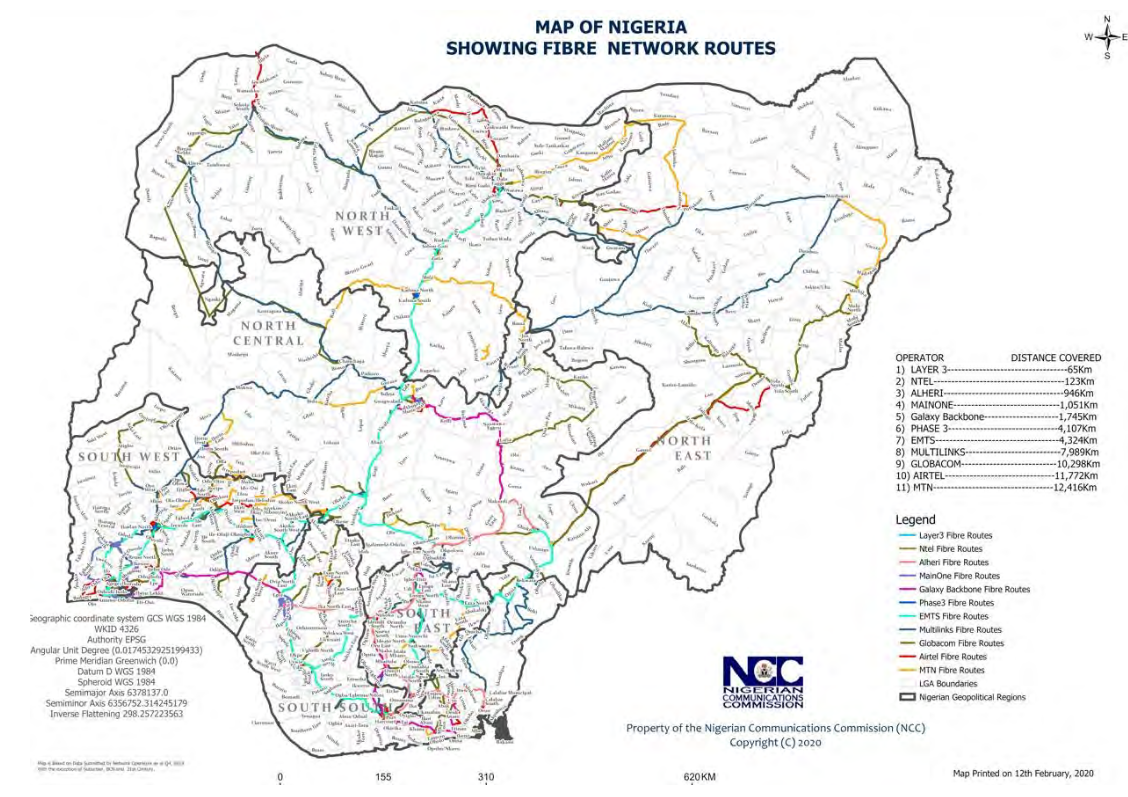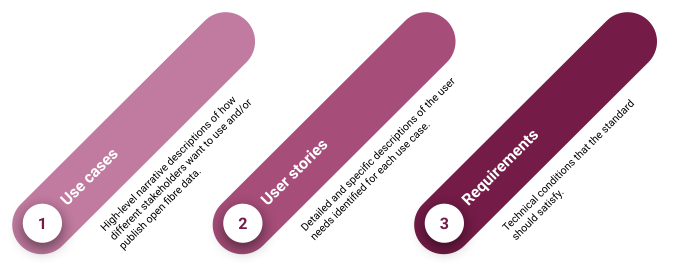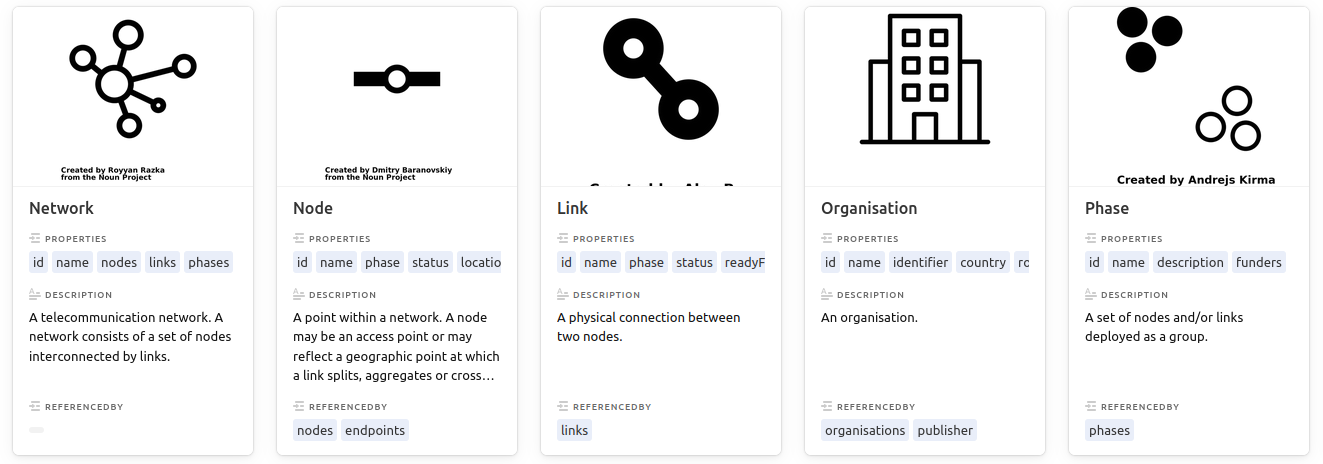The Open Fibre Data Standard (OFDS) is a new data standard for publishing data on fibre optic broadband infrastructure.
Under a joint declaration, the World Bank and the International Telecommunications Union (ITU) launched the OFDS initiative and partnered with Mozilla Corporation. They involved a range of stakeholders from civil society and private sector, including Internet Society, Liquid Telecom, Digital Council Africa and CSquared, to advocate for open data on fibre optic networks and to develop an initial data model. Open Data Services Co-operative was contracted to develop OFDS in February 2022. Existing efforts to open up and standardise data on fibre optic networks include AfTerFibre and the ITU Broadband Maps.
Fibre optic networks are essential infrastructure for a modern economy, but the telecom sector lacks readily available and usable data on fibre optic network infrastructure. OFDS aims to increase the availability, accessibility and usability of fibre network data by describing what data to publish to meet the needs of a range of users and how to structure and format that data for publication and use. You can read more about the policy environment for opening up fibre optic network data in the World Bank’s blog: Making it Possible for the World to Log On.

The lack of fibre network data causes problems for a range of stakeholders, for example:
-
Network operators invest time and money in duplicating existing fibre network infrastructure, ultimately increasing costs for end users.
-
Academics, researchers and policy analysts can’t assess the socioeconomic impact of high-speed broadband connectivity, which in turn means that governments can’t make informed decisions about investing in fibre infrastructure.
-
Network operators, governments and investors struggle to identify infrastructure gaps and opportunities, which leads to communities and institutions remaining underserved and missing out on the benefits of access to high-speed broadband.
Maps and data: What’s the difference?
Maps are a type of data visualisation; they are distinct from the data itself.
While some network operators publish some degree of information about their networks, it’s typically published as images — in the form of ‘static’ maps. This means that those interested in carrying out any type of analysis need to trace the maps to generate machine readable data. By using OFDS to publish data on their networks, operators can significantly reduce the effort and cost required to access and use their data.

Access to the underlying data is particularly important for users that want to combine data on different networks or join-up fibre data with other sources of social or economic data. The end result of these analyses may still be a map, but publishing fibre data in OFDS format makes analyst’s lives easier and supports the development of reusable tools and methodologies for working with fibre data. Publishing open fibre data, rather than maps, also ensures that permission is granted for reuse.
Many network operators publish no information at all, in which case we hope that OFDS will encourage the publication and sharing of previously closed data.
Research
At Open Data Services, we have a wealth of experience of developing open data standards across a range of sectors.
We’ve developed a well-established methodology for understanding new contexts. Although OFDS is our first foray into physical infrastructure assets and fibre optic networking,we were able to rapidly and effectively develop our understanding of the context, aims and challenges of the initiative.
A key part of our methodology is understanding the needs of data users through demand-side research. To that end, we partnered with a fellow co-operative, Community Broadband Network (CBN), to interview stakeholders including network operators, telecommunications consultants, researchers, regulatory associations, investors, NGOs and inter-governmental organisations. We also undertook extensive desk research to identify other potential uses of open fibre data.
We then followed a three-step process to document the findings from the demand-side research, which resulted in 7 primary use cases, 47 user stories and 38 requirements for OFDS.

We found that the primary use cases for fibre data include:
- network investment, planning, and deployment
- avoiding damage to existing network infrastructure
- climate and disaster resilience
Alongside the primary use cases, we identified cross-cutting use cases including mapping and GIS analysis; connecting to other datasets and combining data from different networks.
In parallel to the demand-side research, we carried out supply-side research to gain an understanding of current practice in sharing and publishing data on fibre networks. In particular, we sought to understand
-
who is sharing fibre data
-
how fibre data is structured and formatted
-
what fields and structures are common across different datasets
-
the level of existing standardisation
We identified 41 fibre data publications covering a representative sample of African countries along with publications from further afield. We reviewed the structure, content, and format of the datasets identified in each publication and documented the fields present in each dataset. In total, we studied 343 fields across 84 datasets, which resulted in 30 requirements for OFDS.
Development
Alongside the research process we iteratively developed the data model for the standard, starting with a set of fields proposed by a technical working group convened by the project stakeholders.

We linked each property in the data model to the requirements documented in the supply- and demand-side research, which are in turn linked to the user stories and use cases.
Use case
Network investment, planning and deployment
User story
As a network provider, I want to identify nodes at which power is available so that I can place active equipment there.
Requirement
Power availability
Property
Node.power
Description
Whether power for active network equipment is available at this node
Maintaining these links helped us identify gaps and ensure that the fields in the data model were properly grounded in needs of data users and publishers.

What next?
We recently released OFDS version 0.2.0, which incorporates learnings from the pilots we’ve been supporting in Kenya and Ghana. The documentation site for the standard includes a primer on open fibre data and OFDS; guidance on how to publish and use OFDS data; and comprehensive reference documentation for the schema, codelists and publication formats. We’ve also developed a version of CoVE, our tool for converting, validating and exploring data, for OFDS.
Over the coming months, we’ll continue supporting the pilots by running capacity building workshops in Kenya and Ghana and by providing remote support. We’ll also continue to refine the standard and its documentation as we learn more about implementers and users’ needs, and we’ll be working with partners on community building, advocacy and governance for the standard.
You can keep up to date with the development of OFDS by watching the public discussion forum and issue tracker. If you’re interested in implementing OFDS, please email openfibre@opendataservices.coop and a member of the OFDS Support Team will be in touch with you soon.
